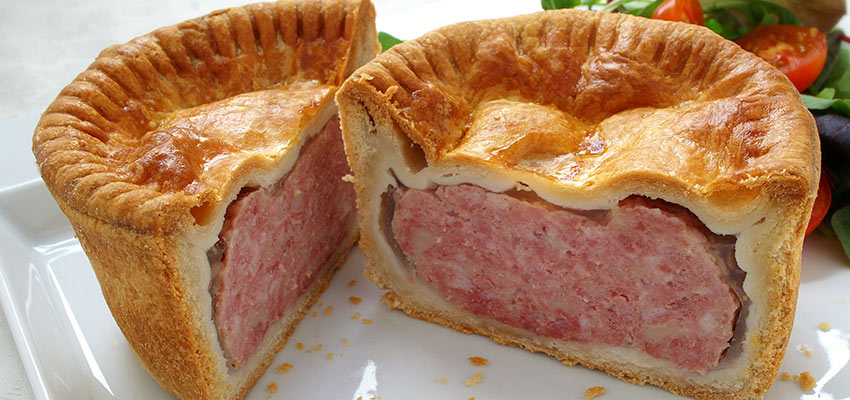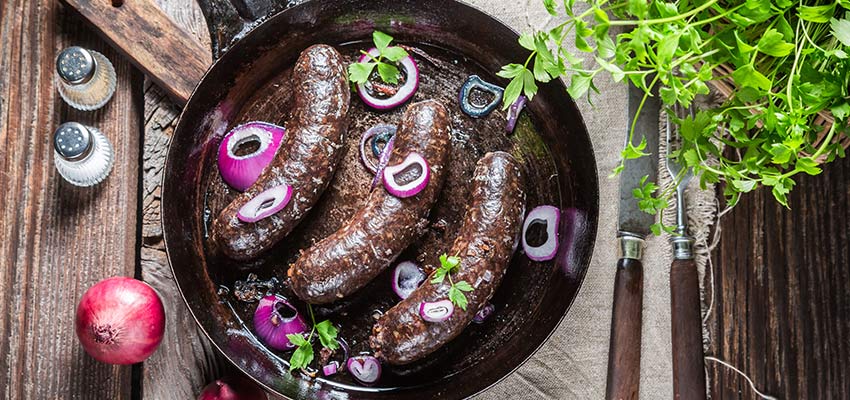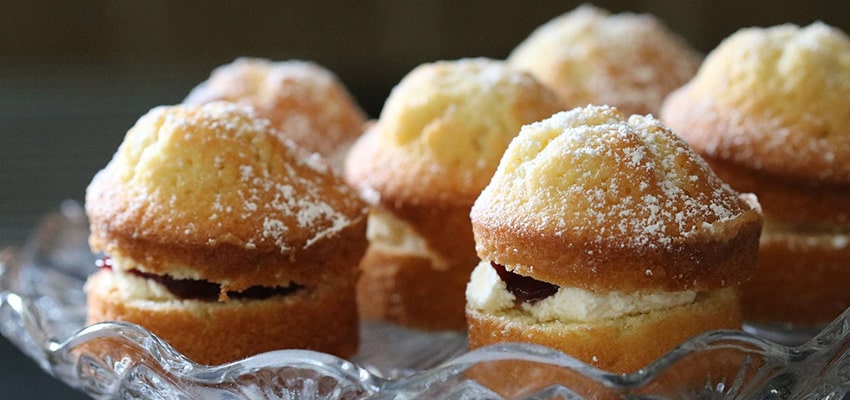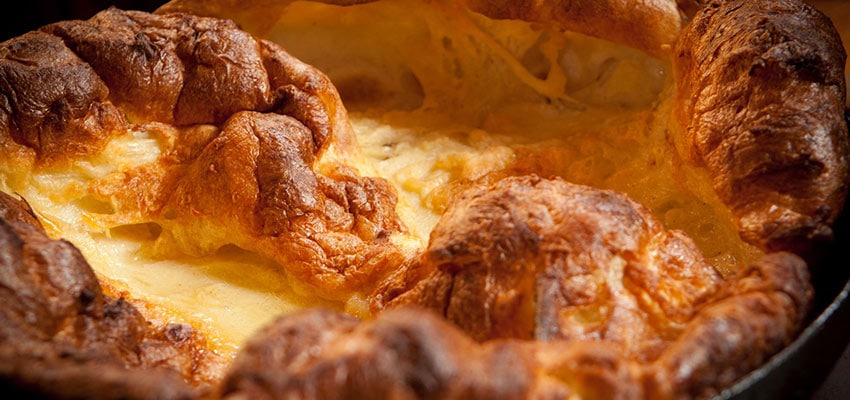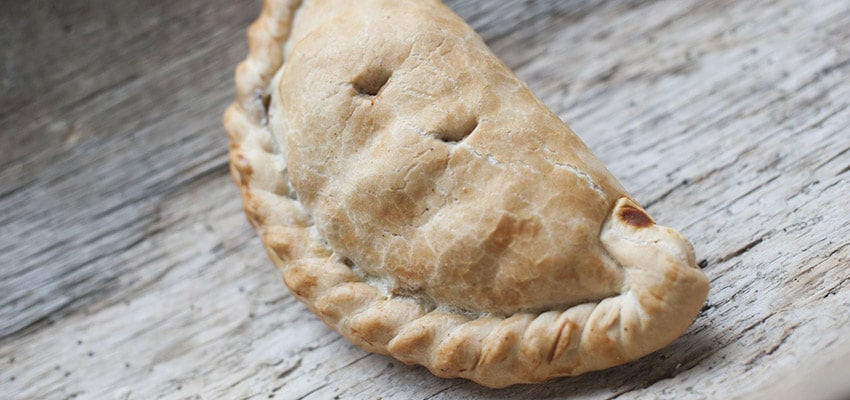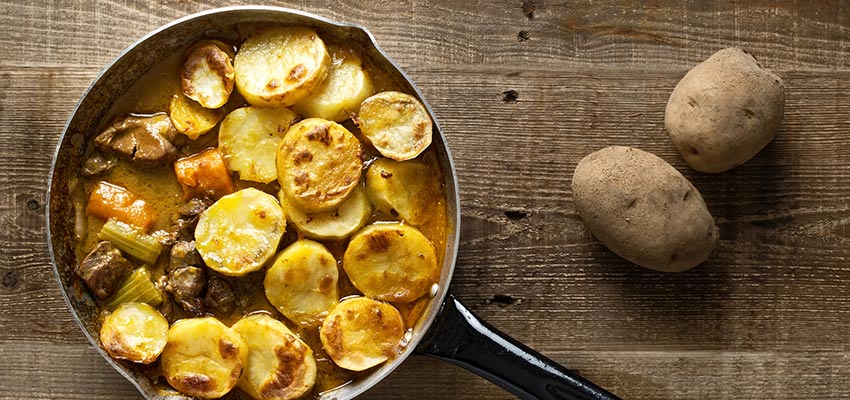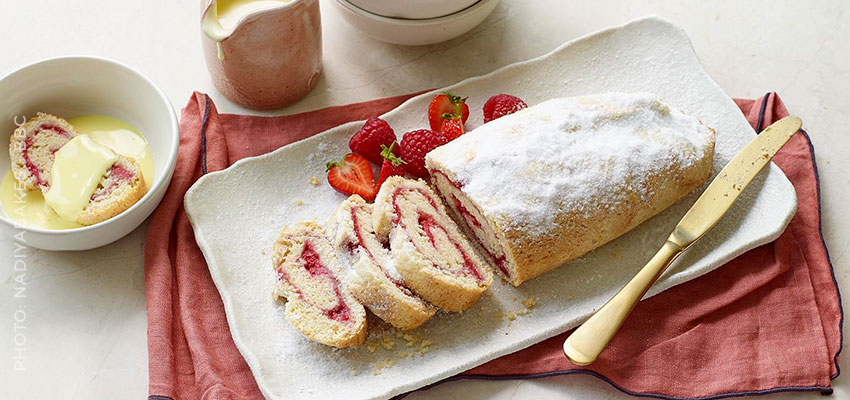On your England vacation, eat like a local and you’ll come to understand the country’s history. Traditional English food is the story of a country with a class-conscious past. Many dishes are reminiscent of idyllic English summers, garden parties, and afternoons spent enjoying beautiful tea on the lawn. Others were created by the poor who needed to use their imaginations and cook the foods they could get. All spell England. Dive in!
Pork Pie
In the seventeenth century, pork pies were made with meat that needed to be preserved. Butter was poured into the hole on top of the pastry, preventing air from getting in—this kept the meat fresh. Pork pies were the food of farm laborers, but they became popular with the aristocracy and they started eating them on hunts. Today, one-third of the UK’s pork pies come from Melton Mowbray. There is hearty rivalry between the locations where pork pie is made.
How to eat it: With a pint of beer, pickle or relish, mushy peas and chips. To really go local, eat it while riding a horse.
Black Pudding
Black pudding is a delicacy made from boiled animal blood, fat, and oatmeal. Historically, black pudding was a food for the poor, although the Tudors went slumming and served it at their banquets. A handful of UK locations are famous for black pudding. (In Stornoway, black pudding has EU protected status.) Chadwick’s Original Bury Black Pudding in Lancashire has been making and selling black pudding since 1856.
How to eat it: Black pudding is eaten as part of an English breakfast. It’s sometimes served at high-end restaurants, too, due to celebrity chefs Gordon Ramsay and Heston Blumenthal. When they began using it in their dishes, it became a popular item once again.
Victoria Sponge
In her journals, Queen Victoria mentions tea 7,000 times—she enjoyed sponge cake so much that it was eventually named after her. A genuine Victoria sponge cake has a simple layer of raspberry jam (cream was introduced later) and is dusted with powdered sugar.
How to eat it: Afternoon tea is perfection. If you want the full luxury experience, book at Claridge’s or the Ritz. You can also visit one of the many Victorian tea shops and enjoy the Queen’s favorite.
Yorkshire Pudding
Today, Yorkshire pudding comes with a roast dinner, but in the past it was served as an appetizer with gravy. The idea was that by the second course you would be so full that you’d eat less meat, and meat was expensive. Yorkshire pudding batter was placed beneath the meat joint while it was roasting, so the juices would mix with the batter. Once cooked, it was sliced into portions. Any leftovers were eaten with jam or fruit.
How to eat it: Yorkshire pudding with your Sunday roast is a must, but you can also try a Yorkshire Pudding Wrap. It’s sort of an English burrito.
Trifle
Trifle is a quintessentially English dessert made with fruit, sponge, whipped cream, and custard. It is traditionally served in a large, decorative glass bowl. The earliest trifle recipe dates from 1585. A much simpler dish, it was made with cream, rosewater, and sugar. During the 18th century cookies, or sponge and alcohol, were added. There are hundreds of varieties of trifle today, and it is often brought out with a flourish at Christmas.
How to eat it: While complimenting the chef.
Cornish Pasty
A Cornish pasty is a pastry filled with meat and vegetables and then baked in the oven. In the 13th century, pasties were filled with venison or other game and enjoyed by the very wealthy. In the 17th century, they became popular with Cornish tin miners—they could be eaten as a mid-morning meal down in the mine. These days, the status of Cornish pasties is protected by the European Commission, and millions are sold every year.
How to eat it: Wrapped in paper, with your fingers, after a long walk along the Cornish coastline.
Lancashire Hotpot
Lancashire hotpot is a tasty dish made with mutton or lamb, onions, and layers of sliced potatoes. The signature dish of Lancashire, it originated in pre-industrial times. Cottage workers would leave a large earthenware stew pot on the fire all day, keeping an eye on it while working. Today, it is a well-loved dish that you can find on the menu in any Lancashire pub.
How to eat it: With pickled red cabbage or beetroot, sitting next to a roaring fire.
Jam Roly Poly Pudding
Jam Roly Poly pudding is a suet pudding spread with jam, rolled up, and then boiled or steamed in muslin. Once an English staple, it’s no longer fashionable. The oldest recorded Jam Roly Poly recipe is dated 1845. In the past, it was steamed using an old shirt sleeve, giving it the gruesome nickname, “dead man’s arm.”
How to eat it: For the full delicious effect, eat with custard.
An authentic travel experience includes eating local meals, ones that you won’t find at home. If you’re a foodie, consider a vacation with private classes, farm kitchens, and dining in areas known for their fare.
England is about more than Cream Tea, Afternoon Tea, and trifles! Ask your Destination Expert about including a foodie experience in your England vacation.


